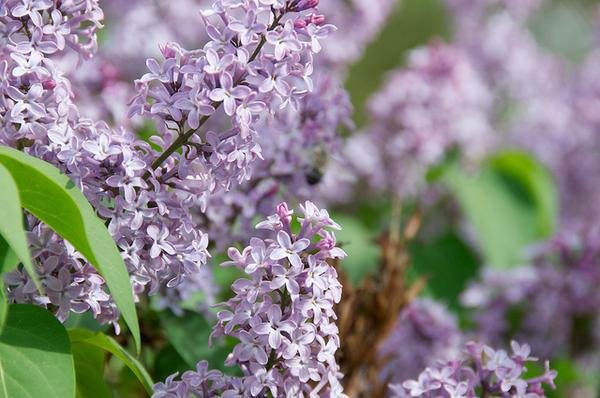 Image 1 of 5
Image 1 of 5

 Image 2 of 5
Image 2 of 5

 Image 3 of 5
Image 3 of 5

 Image 4 of 5
Image 4 of 5

 Image 5 of 5
Image 5 of 5






Persian Lilac
POT SIZE: #3
Mature Height: 4-8 ft
Mature Width: 5-10 ft
Exposure: Full Sun
Hardiness Zone: 4-8
The Persian Lilac, also known as Syringa × persica, is a graceful, spreading lilac shrub prized for its abundant clusters of fragrant lavender-purple flowers in late spring. Smaller and more delicate than traditional lilacs, this variety features fine-textured foliage and arching branches, making it an excellent choice for borders, hedges, and small gardens. Its highly scented blooms attract butterflies, bees, and other pollinators, enhancing the beauty and ecological value of any landscape.
Foliage: Light green, lance-shaped leaves provide a soft, airy texture, giving the plant a more delicate appearance compared to larger lilac varieties. The open branching allows for good airflow, helping to reduce disease susceptibility.
Flowers: Produces profuse clusters of small, light purple to lavender flowers with an intense, sweet fragrance. The blooms appear in late spring to early summer, creating a stunning and long-lasting floral display.
Growth Habit: Grows 4-8 feet tall and 5-10 feet wide, with a gracefully spreading, arching form. Unlike traditional lilacs, Persian Lilac has thinner branches and a more open growth habit, making it ideal for naturalized plantings.
Climate: Thrives in full sun and prefers well-drained, slightly alkaline soil. It is more heat-tolerant than other lilacs and adapts well to warmer climates where standard lilacs may struggle. Once established, it is also drought-tolerant.
Maintenance: Requires minimal pruning but benefits from light shaping after flowering to maintain a compact form and encourage new growth. This variety is more resistant to powdery mildew than larger lilac species.
Landscape Uses: Persian Lilac is ideal for hedges, mixed borders, foundation plantings, and naturalized gardens. Its spreading habit and intensely fragrant flowers make it perfect for creating informal hedges, mass plantings, or as a standout flowering shrub in any landscape.
POT SIZE: #3
Mature Height: 4-8 ft
Mature Width: 5-10 ft
Exposure: Full Sun
Hardiness Zone: 4-8
The Persian Lilac, also known as Syringa × persica, is a graceful, spreading lilac shrub prized for its abundant clusters of fragrant lavender-purple flowers in late spring. Smaller and more delicate than traditional lilacs, this variety features fine-textured foliage and arching branches, making it an excellent choice for borders, hedges, and small gardens. Its highly scented blooms attract butterflies, bees, and other pollinators, enhancing the beauty and ecological value of any landscape.
Foliage: Light green, lance-shaped leaves provide a soft, airy texture, giving the plant a more delicate appearance compared to larger lilac varieties. The open branching allows for good airflow, helping to reduce disease susceptibility.
Flowers: Produces profuse clusters of small, light purple to lavender flowers with an intense, sweet fragrance. The blooms appear in late spring to early summer, creating a stunning and long-lasting floral display.
Growth Habit: Grows 4-8 feet tall and 5-10 feet wide, with a gracefully spreading, arching form. Unlike traditional lilacs, Persian Lilac has thinner branches and a more open growth habit, making it ideal for naturalized plantings.
Climate: Thrives in full sun and prefers well-drained, slightly alkaline soil. It is more heat-tolerant than other lilacs and adapts well to warmer climates where standard lilacs may struggle. Once established, it is also drought-tolerant.
Maintenance: Requires minimal pruning but benefits from light shaping after flowering to maintain a compact form and encourage new growth. This variety is more resistant to powdery mildew than larger lilac species.
Landscape Uses: Persian Lilac is ideal for hedges, mixed borders, foundation plantings, and naturalized gardens. Its spreading habit and intensely fragrant flowers make it perfect for creating informal hedges, mass plantings, or as a standout flowering shrub in any landscape.
